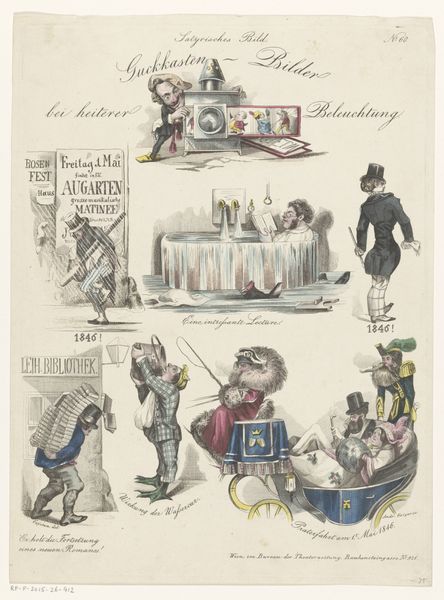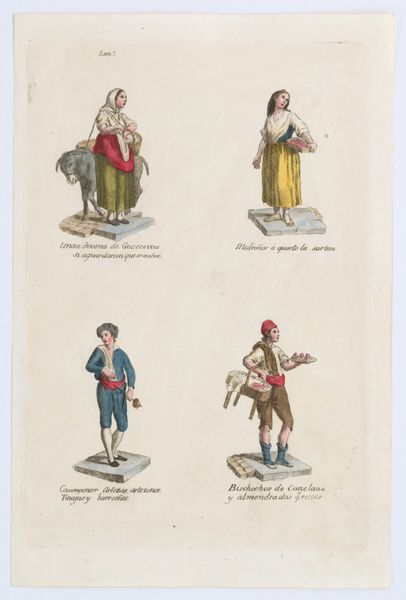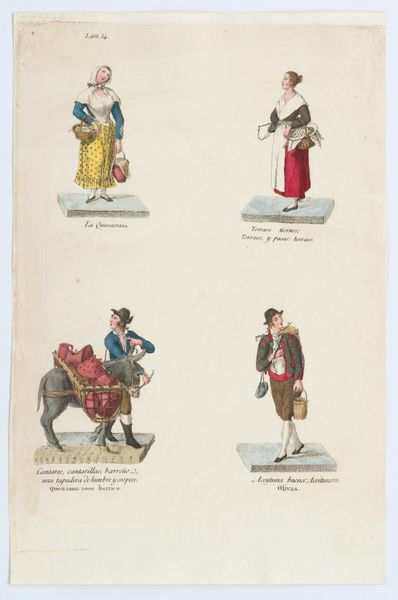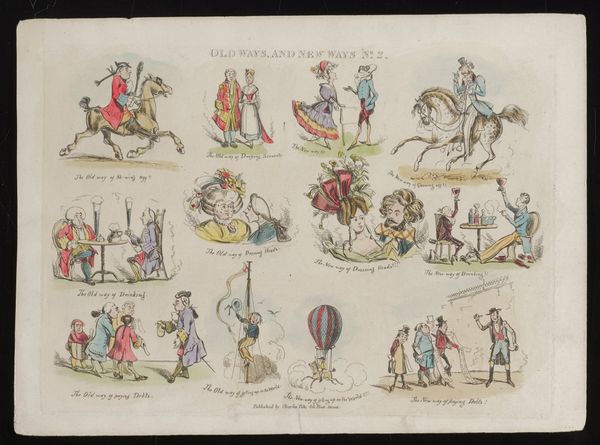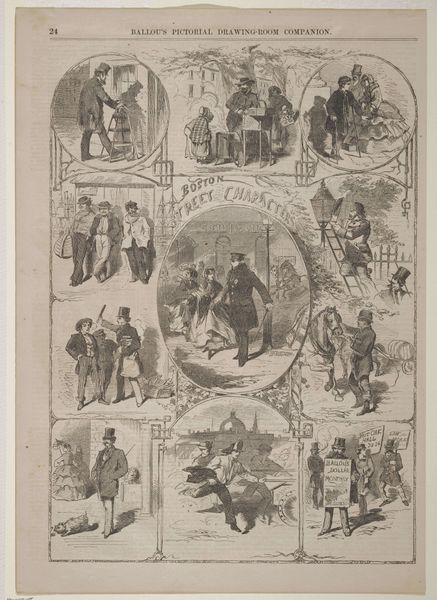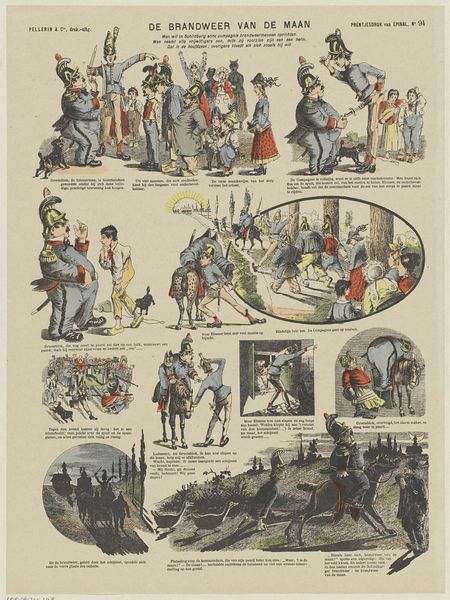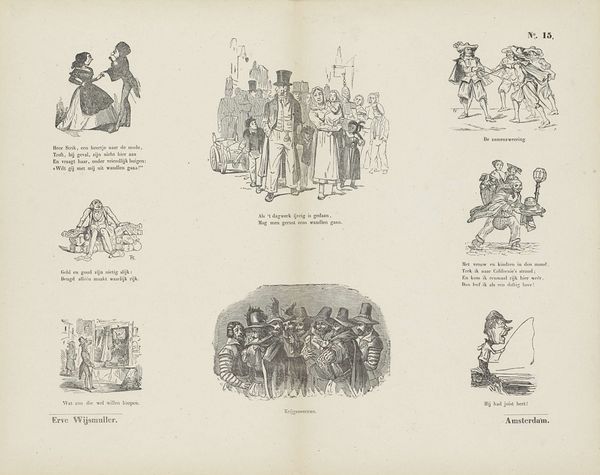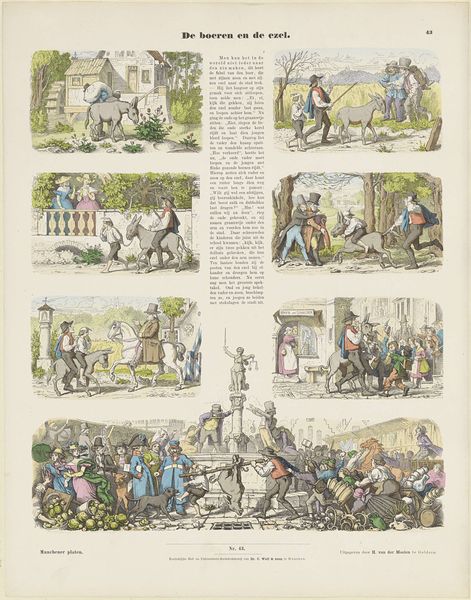
lithograph, print
#
lithograph
#
fancy-picture
# print
#
romanticism
#
genre-painting
#
history-painting
#
academic-art
Dimensions: height 307 mm, width 230 mm
Copyright: Rijks Museum: Open Domain
Curator: Andreas Geiger created this lithograph in 1843. It’s entitled “Vijf scènes op het gebied van kunst en cultuur,” or “Five Scenes in the Realm of Art and Culture.” It gives us a charming glimpse into Viennese life during that time. What strikes you first about this piece? Editor: My initial impression is one of compartmentalization and pastiche. It's like a mood board for the burgeoning cultural industries of the mid-19th century. I am curious what you would make of all the implied divisions. Curator: I think the composition speaks volumes about the cultural landscape at that time. The way each vignette is separated, almost like postage stamps on a larger sheet, emphasizes the burgeoning specialization within the arts. You have ‘Kunst,’ ‘Literatur,’ ‘Musik,’ ‘Mode,’ all neatly boxed in, while Vienna proudly displays itself as the cultural hub, like the heart of it all. I see these distinct zones coming together under one broad canopy. Editor: Ah, interesting point. I’m also intrigued by the prominent display of text intermingled with the illustrations. The very lettering is treated as an art form. Do you feel that the inclusion of 'Wiener Allgemeine Theater-Zeitung' at the top speaks to its function as an advertisement or announcement, turning it into an almost postmodern piece? Curator: Absolutely, this was advertising. It promoted the theater and more broadly, the arts scene in Vienna. Think of this as a very elaborate advertisement, meant to capture attention. Geiger cleverly incorporates elements of genre painting to give viewers a peek into the lives of artists, musicians, and writers. And his embrace of romanticism makes us feel its nostalgic tug for the past and imagined pasts, combined with a yearning for something bigger and further beyond reach. Editor: I agree. This lithograph acts as a capsule of the Romantic spirit. The scenes hint at larger stories, inviting the viewer to fill in the blanks with their own imaginations. The figure looking into that peep box—the Kaiserspanorama or similar optical entertainment, a late 18th, early 19th century VR headset–is a particularly compelling and mysterious detail. What do you imagine someone experiencing while turning that crank? Curator: That's wonderful observation! Looking at that small scene with such keenness reminds me of trying to conjure whole worlds from small stimuli, finding magic in mundane reality, but for an entire viewing crowd, and doing so in 1843! The printing’s division and seeming promotion, that nostalgia with modernity mixing together–the artist asks the viewer what this explosion of human creativity really MEANS. What’s the value? What’s the trade? The beauty? All there for just a look, an admission price, a subscription? Editor: Well, it certainly inspires contemplation of those contrasts, and how little our culture of production and dissemination has changed in almost two centuries. Thanks! Curator: Thanks! That peep show calls me in!
Comments
No comments
Be the first to comment and join the conversation on the ultimate creative platform.
